Sidebar
Main Menu
Best French City of Lyon, An Elegant Paris Alternative
Lyon is not a top of mind city in France. It has the elegance of Paris, but without the attitude. This city of the Lyonnais gourmand can rack up Michelin Star restaurants and impress with several UNESCO World Heritage sites.
We visited Lyon three years ago on a fluke. We had been traveling to Geneva on vacation, and I wanted to visit France before leaving the continent. The city closest to Geneva was Lyon, only a 90-minute ride on the TGV (Train à Grande Vitesse). We visited Lyon for a short but amazing three days. At the end of the trip, we promised ourselves that we would come back for an extended visit one day in the future.
That day came sooner than expected. We lived in Lyon this past year, and I did not want to leave. People who visit Lyon agree that it is like discovering a hidden gem. It has the feel of Paris without the crowds, the traffic, and definitely without the attitude.
What We Will Cover:
Getting Around Lyon
Lyon is smack in the center of the country (east-central, actually). It is 90 minutes southeast of Paris on the TGV. From the Charles de Gaulle Airport (CDG), you can take a TGV going to Marseille (and points to the South of France), and Lyon will be the first stop.
There are 6 train stations in Lyon, but there are two that you need to know. The central station is Gare de Lyon Part-Dieu. If you are going or coming from a major city in France or internationally, Part-Dieu will be your station. Gare de Lyon Perrache was the original central train station until the 1980s. Perrache could be an alternative station depending on your schedule. Part-Dieu is located on the west bank of the Rhone River while Perrache is on the Presqu'ile. It is very convenient for those who live north of Lyon and walk-able to anywhere on the Presqu'ile. Perrache is normally a continuing stop in Lyon after Part-Dieu (8 minutes to Perrache).
Lyon also has an international airport called Lyon Airport Saint Expuery (LYS), named after Antoine Saint Exupery of Little Prince fame, who was born there. The airport is on the far west side. The best and most economical way to get there is to take a tram connection from Part-Dieu called Rhone Express. The Rhone Express leaves every 30 minutes and it is a 45 minute trip to the airport at a cost of 19 euros each way. A taxi, depending on the time of day, would cost between 80 to 120 euros. Uber is available and would be slightly cheaper.
The Presqu'ile or the peninsula is city-center and great place to start your tour. The peninsula is a narrow strip of land land between the Rhone River and Saone River which run through Lyon.
When on the Presqu'ile, you will gravitate towards Place Bellecour. It is the main square in Lyon (ground zero in GPS) and all festivals, events, activities and protests happen here. You will know Place Bellecour with the statue of Louis IV in the center. Place Bellecour is also the starting point of the shopping district which is pedestrian-only up to the Les Terraux district. This is a wonderful place to walk, shop, have some coffee or a meal. The peninsula is connected by bridges or walk paths over the two rivers. There is a metro-tram system. There is a boat taxi you can take on the west bank of the River Saone, that will go to the Confluence district.
For more info, check out Getting Around Lyon.
Geography and the Italian Connection
Before getting to Lyon or before you start your tour, it is a good idea to get a quick understanding of its history.
Know that Lyon was established in 43 BC before Gaul was conquered by the Romans. The Romans started incursions into Gaul in 200 BC, annexing the South of France in 125 BC. Julius Caesar completed its conquest of Gaul in 52 BC.
Lyon started as a military settlement. In those days, land was granted to military veterans in exchange for loyalty to the republic. Known as "Lugdunum" then, Lyon quickly became the capital of Gaul for the Roman Republic.
Why?
Location was advantageous to the Romans. It was close enough to Italy and easily accessible without crossing the Alps. It was central enough to Germany, which was their next country to conquer. With a system of roads, two large rivers for transport and two hills for security, Lyon became the primary trading partner with the Romans and later, Italy, for centuries even after the fall of the Roman Empire.
Lyon became very prosperous with its peak during the Renaissance. In the 15th century, King Charles VIII allowed Lyon the right to hold trade fairs four times per year. Caravans of goods from the north and east traveled to these fairs, which lasted for several weeks. Bankers from Florence and wealthy merchants settled in Lyon. They built luxury mansions and stores.
By the end of the 16th century, King Francois allowed Lyon the right to produce silk to compete with Venice. Silk production became a massive industry and a significant employer all through the 19th century.
With the introduction of Christianity in 177 AD, the earliest Christian community (and the earliest persecutions) was in Lyon. In 1032, it was incorporated into the Holy Roman Empire and finally incorporated into the Kingdom of France in 1312.
3 Reasons Why Lyon is Unforgettable
You've had a snapshot of where Lyon is, its geography and some historical perspective. Remember Lyon's geography, 2 Rivers, 2 Hills and a Peninsula. Its geography is its history.
Reason 1: Renaissance Town
Vieux Lyon
On the east bank of the Saone is the historic city of Lyon or Vieux Lyon. The Vieux, all 1000 plus acres of it, is the largest Renaissance town in France and the second largest in Europe after Venice. It was the first area to be declared a cultural site in France in 1954. In 1998, Vieux Lyon, together with the hills of Fourviere and Croix-Rousse, and the Presqu'ile became UNESCO World Heritage sites.
There are three sections to the Vieux, Saint-Jean, Saint-Paul, and Saint-Georges. You will notice that most names on the Vieux will be saints or martyrs.
The Saint-Jean section dates back to the Middle Ages. The prominent part of this neighborhood is the Cathedrale de Saint-Jean (St. John the Baptist) and the square around it. The cathedral is the seat of the Archbishop of Lyon, also the "Primat de Gauls." The Primat or the First of Gaul designation refers to Lyon being the first diocese in France.
Dedicated to St. John the Baptist, it took about 300 years (1180-1476) to construct this Romanesque and Gothic style church. The church is a significant feature in the famous Festival of Lights held every year the week of December 8. More on this later.
The Saint-Paul area is more Renaissance in character, going back to the 15th and 16th centuries. There is a Church of St. Paul and a small train station in this area. The original church started in 549 but was built, decommissioned, then rebuilt over the centuries. It became a parish church in the 19th century.
In this neighborhood, Italian bankers and merchants settled and built lavish mansions and stores. Italian influences are evident in this neighborhood with rose-colored architecture, and arches and windows found in Italy.
The area of Saint-George started early in the 16th century as a place where silk weavers resided. With the growth of the industry, they moved to the Croix-Rousse district in the 19th century. The Church of Saint-George, located on the bank of the Saone, was rebuilt in the 1899s. It remains part of the iconic view of Lyon and the Fourviere. We lived steps from this walk-bridge, and it was a beautiful site each time you see it or hear the church bells ring.
Traboule
What is unique in the Vieux are the "traboules." The word "traboule" comes from the Latin word "trans-ambulare," which means passing through.
Roman towns in the Middle Ages built long parallel roads (no crossroads) between the hill and the river. Passages through houses were used as short-cuts to get to the river. These passages became a usual way to get around town.
Some were long "traboules" that connected all the streets. Some were elaborate with beautiful courtyards and wells, and others were simple.
There are over 400 traboules between the Vieux and Croix-Rousse neighborhoods, but less than 50 are open for public viewing. Longue Traboule is the longest and is always open to the public (from Rue Saint-Jean to Rue du Boeuf)
Fourviere
Although the Fourviere is not technically part of the Vieux, the hill that rises above the banks of the Saone is part of the iconic image of Lyon.
The word "fourviere" is Latin for forum vetus or old forum. Its Roman past will be seen in a well preserved Roman theater near the top of the hill where the site of the original Lyon was. Locally, the hill is called the "hill that prays" because of the Basilica of Notre Dame that sits on top of the hill. (The metallic tower that looks like the Eiffel Tower is a 19th century tower that is the highest point in Lyon. It is now a TV tower.)
A Basilica is no ordinary church. In the world of Catholics, a Basilica is an important church with certain privileges given to it by the Pope. The Basilica is Lyon is an international center of a pilgrimage site for worship of the Virgin Mary. It is not unusual to see busloads of Catholica visitors to the Basilica.
The Catholic Church is still a strong institution in Lyon. It is surprising given the decline of religion overall, but not surprising given Lyon's background as the earliest Christian community in France. Lyon is a city of saints and martyrs, many of whom go back the Middle Ages or early days of Christianity.
Before becoming part of the Kingdom of France, it was part of the Holy Roman Empire in 1032. During the Middle Ages, Lyon was the most visited city in France by the popes after Avignon (seat of the papacy for 70 years dated from 1305-76).
The bishop of Lyon is a powerful man in the French Catholic Church. He has the exclusive title, Primat des Gauls, or First among Gauls, as the head of the first diocese of France. The title has been in existence since 1079.
During the week of December 8, the Fete des Lumieres celebrates the Feast of the Immaculate Conception. It is of particular importance in Lyon because it marks two miracles that saved the city from disastrous events in the past. The first was the bubonic plague in 1643 and the Franco-Prussian War in 1870. Since 1643, a candle lighting event occurs each year to celebrate the miracle. After the city's salvation from the Prussian War, the Basilica was constructed (1872-84) with private funds.
Today's candlelight event is the Fete des Lumieres. Despite its religious origins, the Fete has become an international event. For three nights during the week of December 8 is a lighting extravaganza in 40 venues throughout the city. Historical buildings and landscapes are illuminated in a fantastic show of lights.
Before you leave the Basilica, you should not miss going around to the esplanade. There you will see the most fantastic view of Lyon. On a clear day, you can see as far as Mont Blanc.
Reason 2: The Gourmand
How French Cuisine Became Popular
Historically, European cuisine had been unremarkable until the arrival of the French influence in the mid-17th century. French cooking in itself had its beginnings in the Middle Ages. The reign of Catherine de Medici, who was married to King Henry II of France in the 16th century, brought about a culinary revolution. She brought with her cooks from Tuscany and introduced different foods to France. Sugar, chocolate, butter all became part of the cuisine.
French cuisine gained popularity in the 17th century. At this time, France dominated Europe, militarily, economically, culturally, and politically. Louis XIV and Le Chateau de Versailles symbolized French glory. French chefs, who worked in French courts and palaces, presented impressive and extravagant dishes. The art of French cuisine spread rapidly throughout Europe.
The nobility and aristocracy hired French chefs in England, Spain, Austria, and Russia. In the 18th century, French cookbooks emerged and translated into European languages.
Bouchon and Celebrity Chefs
By the 19th century, the"bouchon" came into existence at about the time of the collapse of the silk industry in Lyon. Women lost their jobs working for rich families and started working for themselves. The typical woman, at that time, came from the countryside and had young children. They moved to the city to find jobs in the bouchons. They were called Les Meres or the mothers.
Some of these women were so good that they established their own restaurants. La Mere Braziere was the first woman to be given three Michelin stars for each of her two restaurants. Unheard of at the time!
You will see many "mom and pop" restaurants all around Lyon. Many are family operations going back decades. Today, there are also many runs by young chefs who want to make a name for themselves. You will not find many chain restaurants or franchise operations. The French have a particular disdain for those food operations.
By the way, "bouchon" means cork or plug (i.e., a way to earn a little money).
Many of the great chefs of Lyon, like Paul Bocuse, started in the kitchen of one of the storied bouchons. Paul Bocuse became the first celebrity chef in the 1970s and the 1980s. French chefs of his generation started preparing lighter dishes, with fewer sauces and newer techniques. French "nouvelle cuisine" emerged supported by restaurant guides such as Michelin and Gault et Millau.
Lyon and Paul Bocuse are almost synonymous. He opened many brasseries and bistros that still exist in Lyon. There is also a cooking school with his name in Lyon, where you can attend or take specialized classes. You can lunch or dine there where meals are prepared and served by culinary students.
Paul Bocuse passed away in 2018.
Open Markets and The Formulaaire
As you go around France, you will find that the fresh or open markets so popular are gravitating towards enclosed food halls. But, in Lyon, a large, real "live" market is still held six days a week. At the Quai Saint-Antoine, on the banks of the Saone, there is a market from Tuesday to Sunday from 8 AM to 2 PM. There are fewer vendors on weekdays but a full board from Friday to Sunday. On Sundays, there is also an arts and crafts market on the opposite bank.
You can get fresh meats, seafood, fruits, and vegetables. There will be cheeses, wines, bread, olives, nuts, tarts, cooked meals, all types of sausages, roast chicken and roast pork, and flowers.
Our favorite Sunday lunch was having sausages, roast pork, or a rotisserie chicken from the market with some artisan baguettes and olives! Very popular around the Quai are outdoor cafes offering oysters and seafood items.
For the distinctive gourmet taste (and there are many), there is the Les Halles de Paul Bocuse. Les Halles is a specialty food hall that features local vendors with a reputation for quality foods and wines. Some of these vendors have been in business for decades or a century. Offerings are very regional i.e., local cheeses, seafood, meats, pastries. There will be restaurants there for a meal at lunchtime or dinner. Try the sweetest oysters you will ever taste or have a fig stuffed with foie gras. Have you tried crunchy duck skin called "friton" or pork skin called "graton"?
Something I appreciated in our stay in Lyon is the practice of "plat du jour" or the "formulaire." We are familiar with the daily specials in the U.S., but in Lyon, it is usual practice.
The formulaire consists of an entree' (appetizer), a main dish, and a dessert. Sometimes you can choose two or mix and match with items on the main menu. All drinks are extra. The average price for a formulaire is about 14 euros lunch or dinner!
The French love to eat out and socialize. The reasonable price allows everyone, including ourselves, to enjoy eating out without breaking the bank.
It is not unusual to have a 2-hour lunch break (longer at dinner). No one will prompt you to pay your bill. You'll sometimes be hard-pressed to find your server.
Reason 3: The Silk Weavers
On the slopes of the Croix-Rousse, the second of two hills over Lyon, are vintage shops, small restaurants, and bars, residences of what used to be a town of silk weavers. The Croix-Rousse is locally called la colline qui travaille or the hill that works to reflect its silk weaver history.
Its history goes back to 1536 when King Francois, gave Lyon the right to produce silk to compete with Venice, the only silk producer then. Silk production quickly became a significant industry in Lyon up until the 19th century. Half the population of Lyon depended on silk production and trade. At one point, 40,000 silk weavers worked in various silk ateliers.
Silk workers started in Vieux Lyon and eventually moved to the Croix-Rousse neighborhood in the 19th century. Many of the houses in Croix-Rousse will have high ceilings, which used to house the large silk looms.
In 1801, Jean Marie Jacquard invented the jacquard loom. This power loom used wooden punch cards to program the operation of the machine. The jacquard loom reduced the number of weavers per loom from two to one.
Silk workers, called "canuts" lost many jobs as a result of the new loom. The Canuts staged the first mass uprising in France in 1834, protesting the loss of jobs and poor working conditions. King Louis Philippe suppressed the riot with tens of thousands of soldiers, although it continued until 1836.
Today, China produces almost all silk in the world. High-end silk design and fabrication are still in Italy and France. You will find many silk shops in Lyon, some fabricators going back decades. Hermes, the high-end French designer, has a facility in Lyon.
I hope you enjoyed reading about Lyon. It brought back so many fond memories of our stay there. I am just so sorry it took me a long time to write it due to personal issues like moving and some IT crashes!
If you have been to Lyon, please share with me your impressions. Did you love it as much as I did?
I leave you with a photo of the Croix-Rousse hill.
When you subscribe to the blog, we will send you an e-mail when there are new updates on the site so you wouldn't miss them.

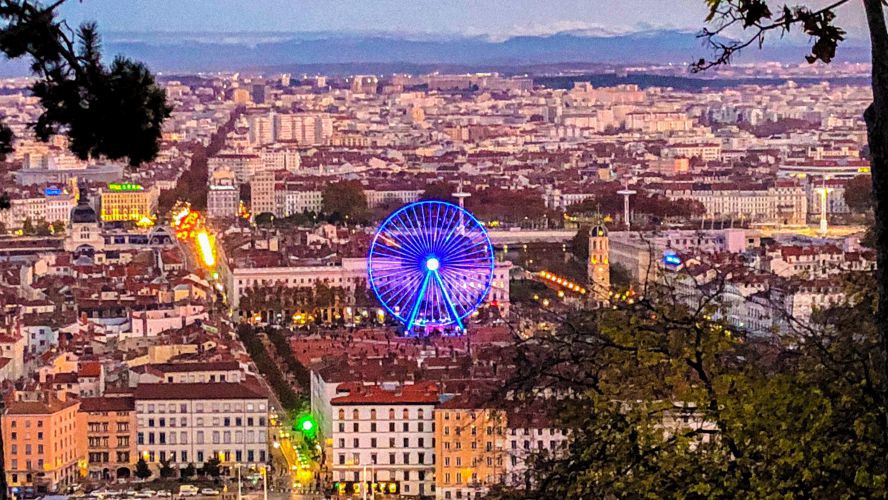
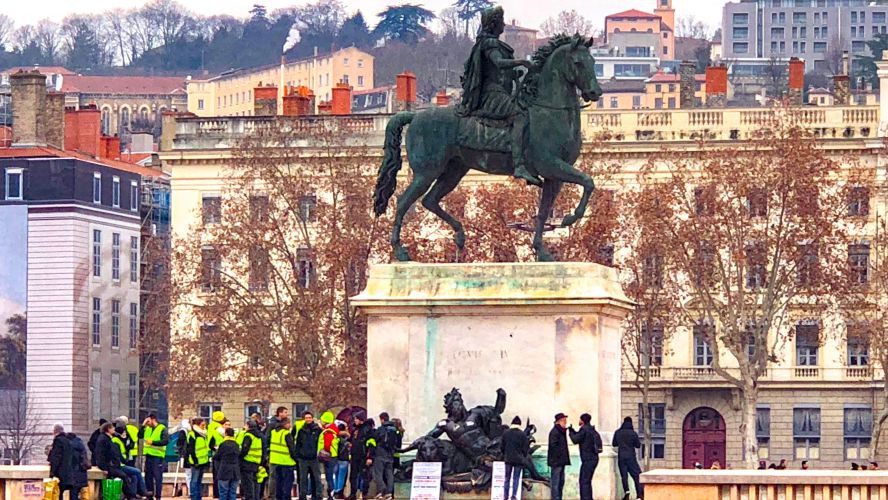
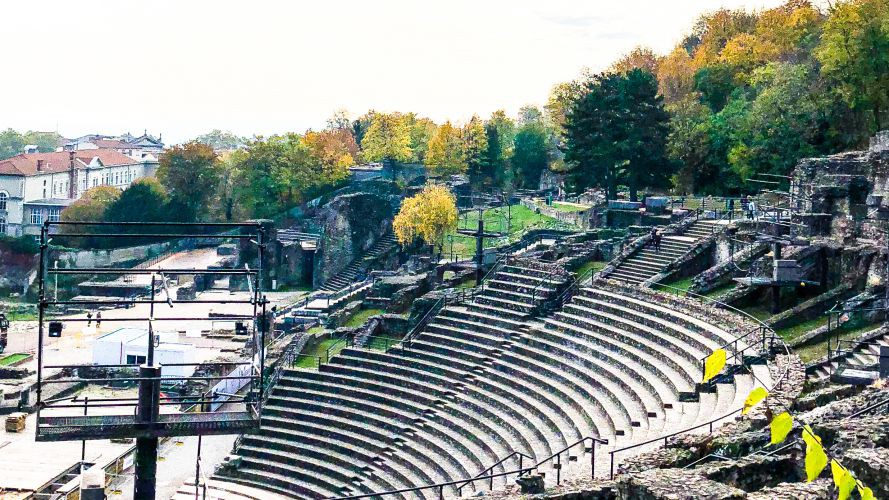
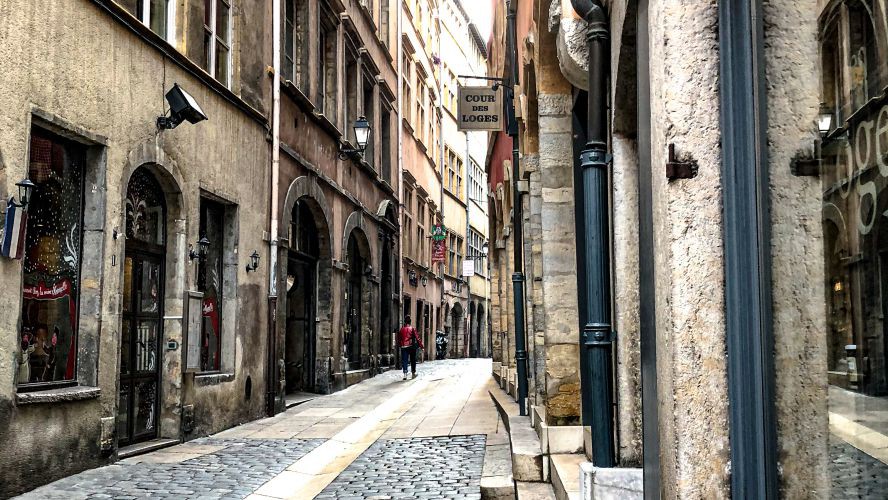
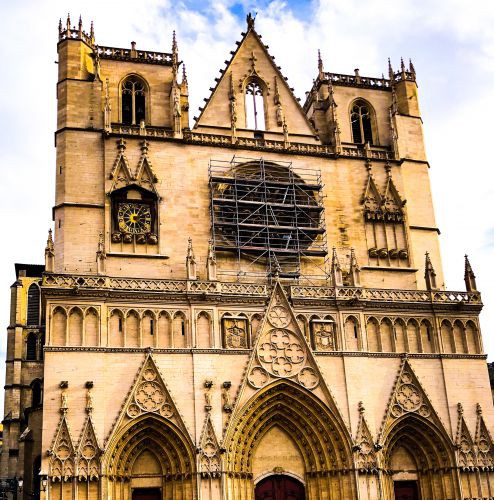
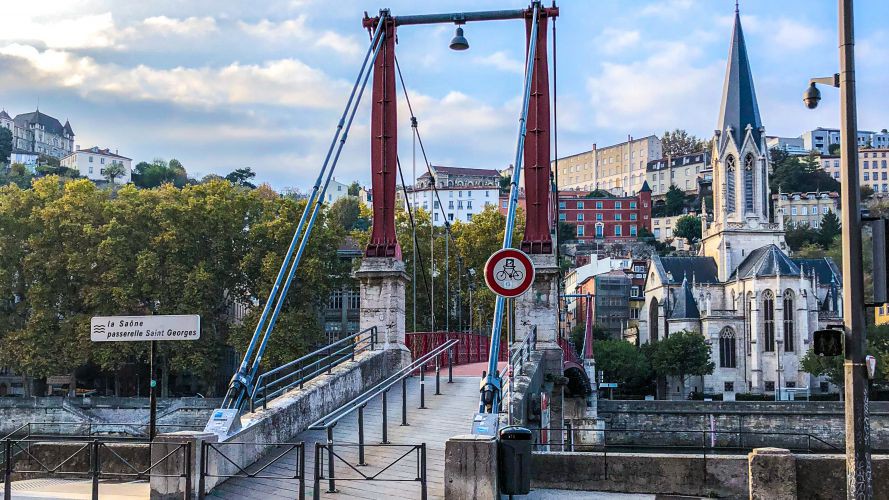
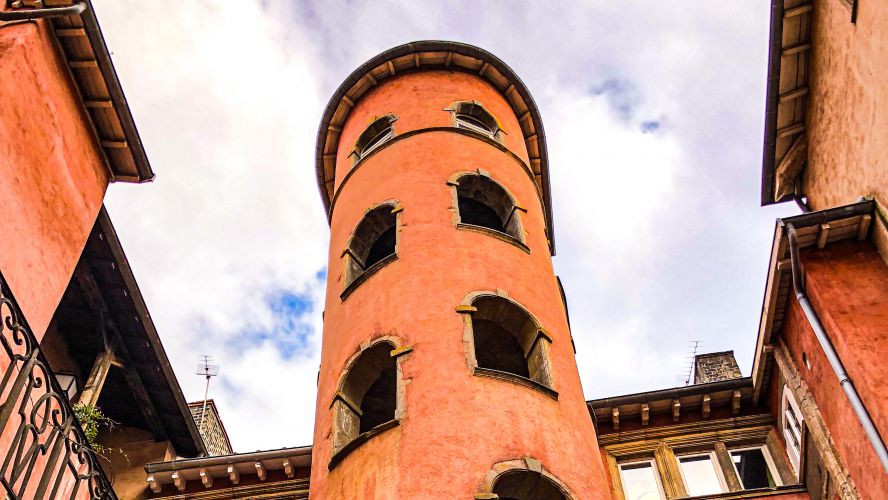
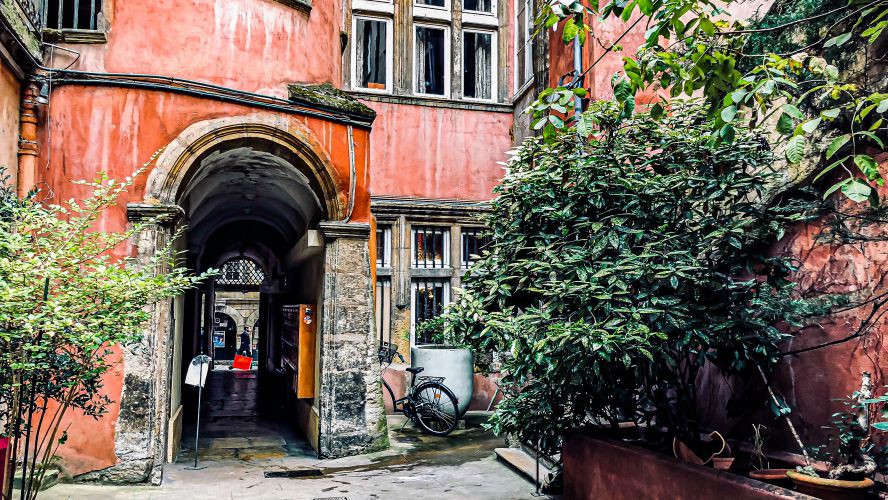
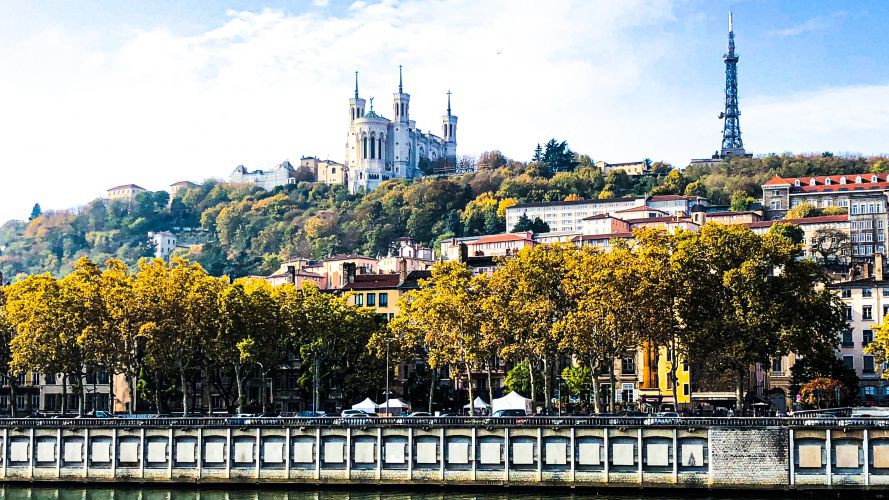
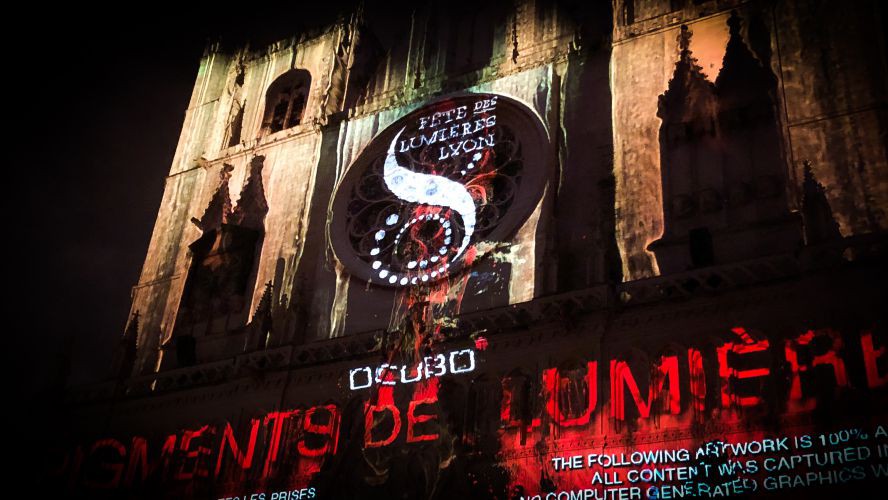
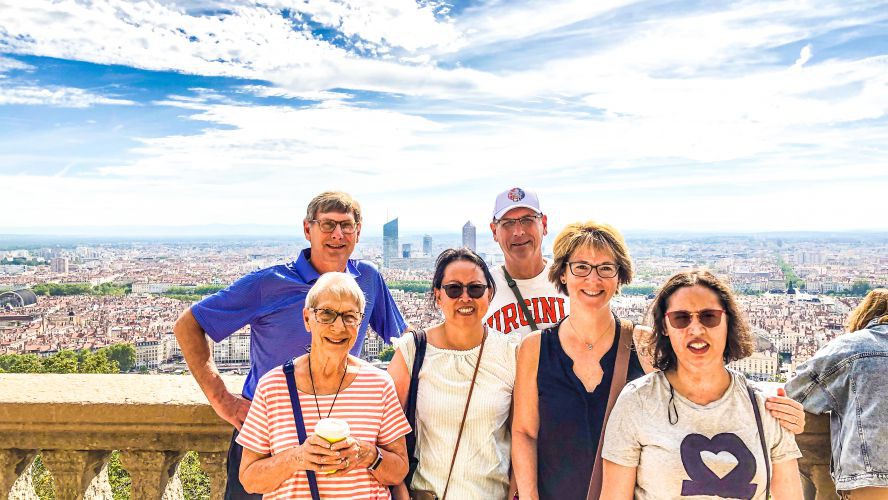
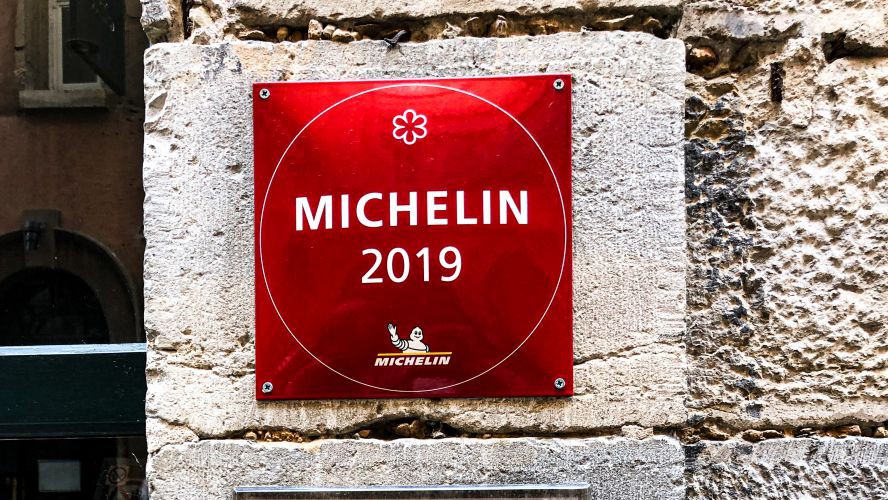
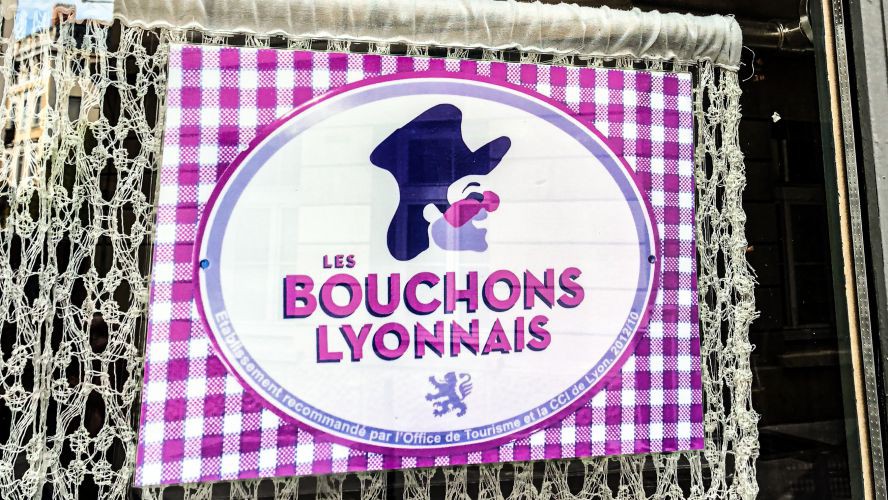
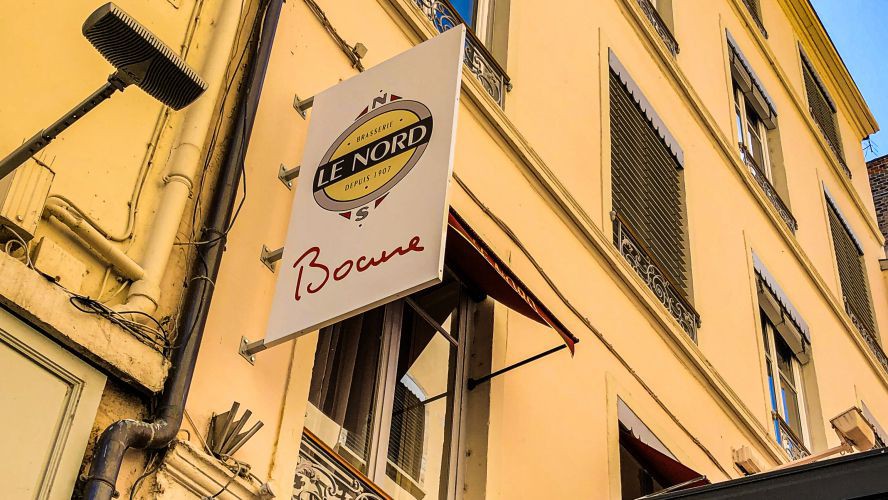
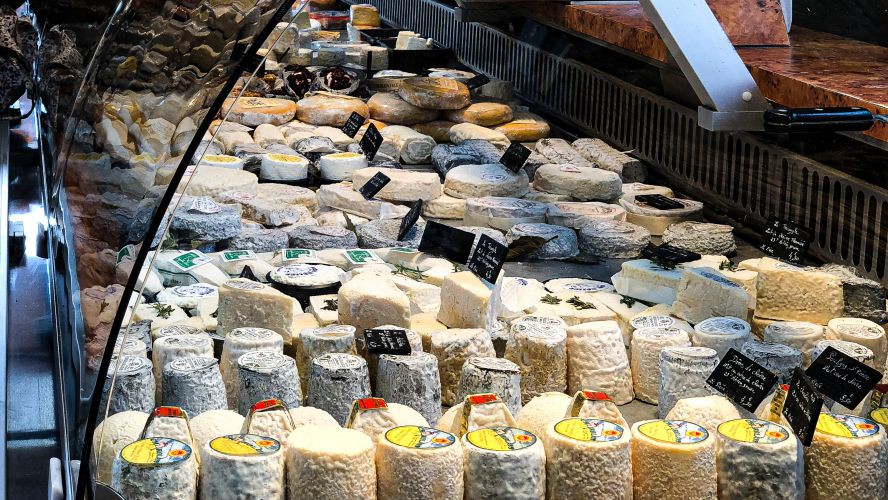
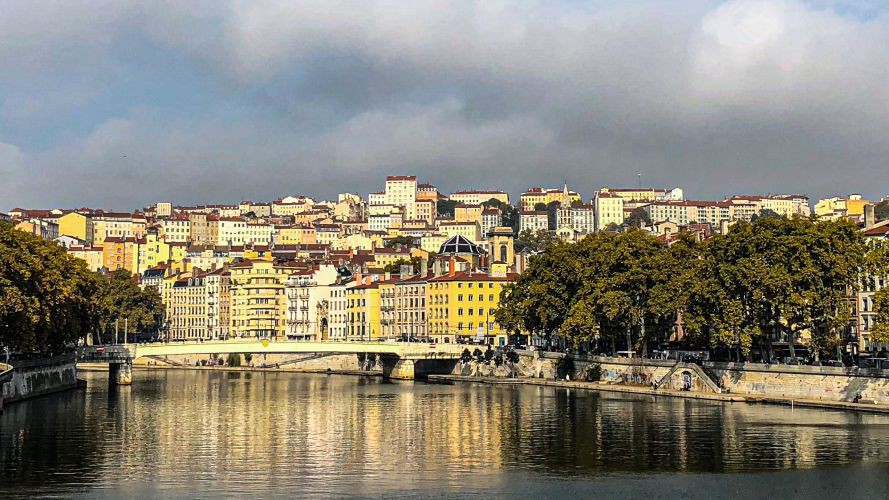
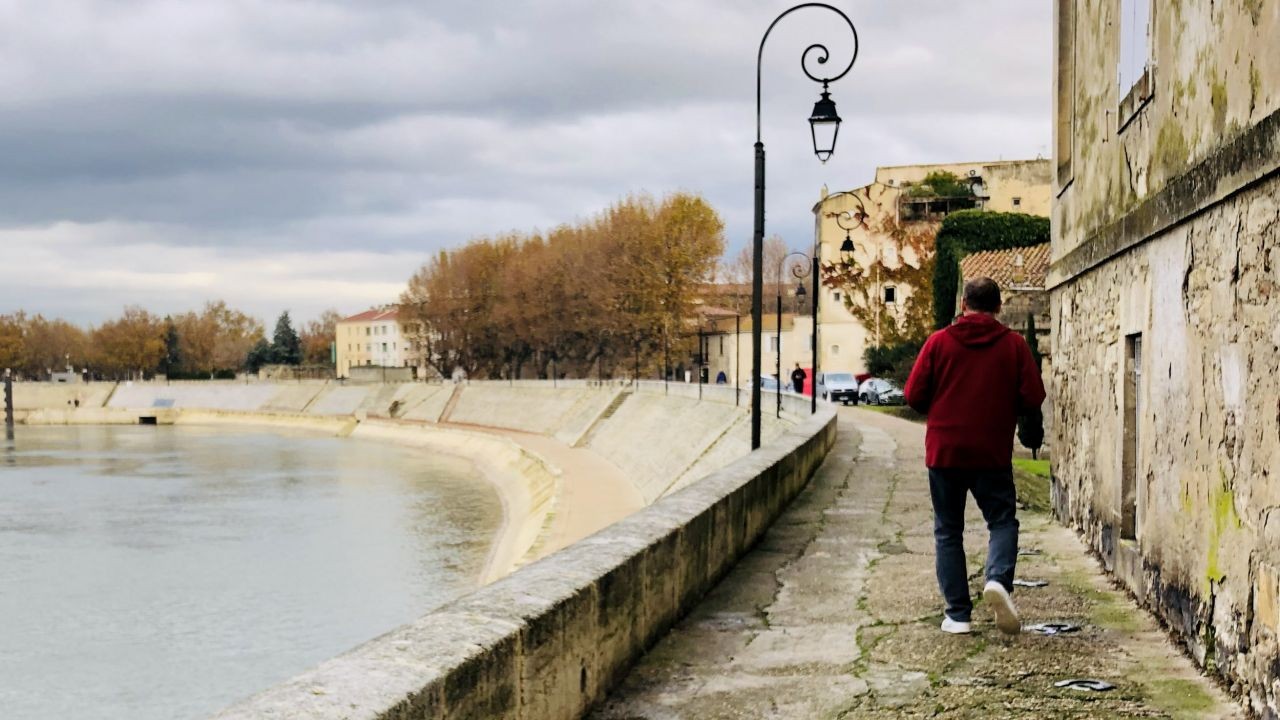
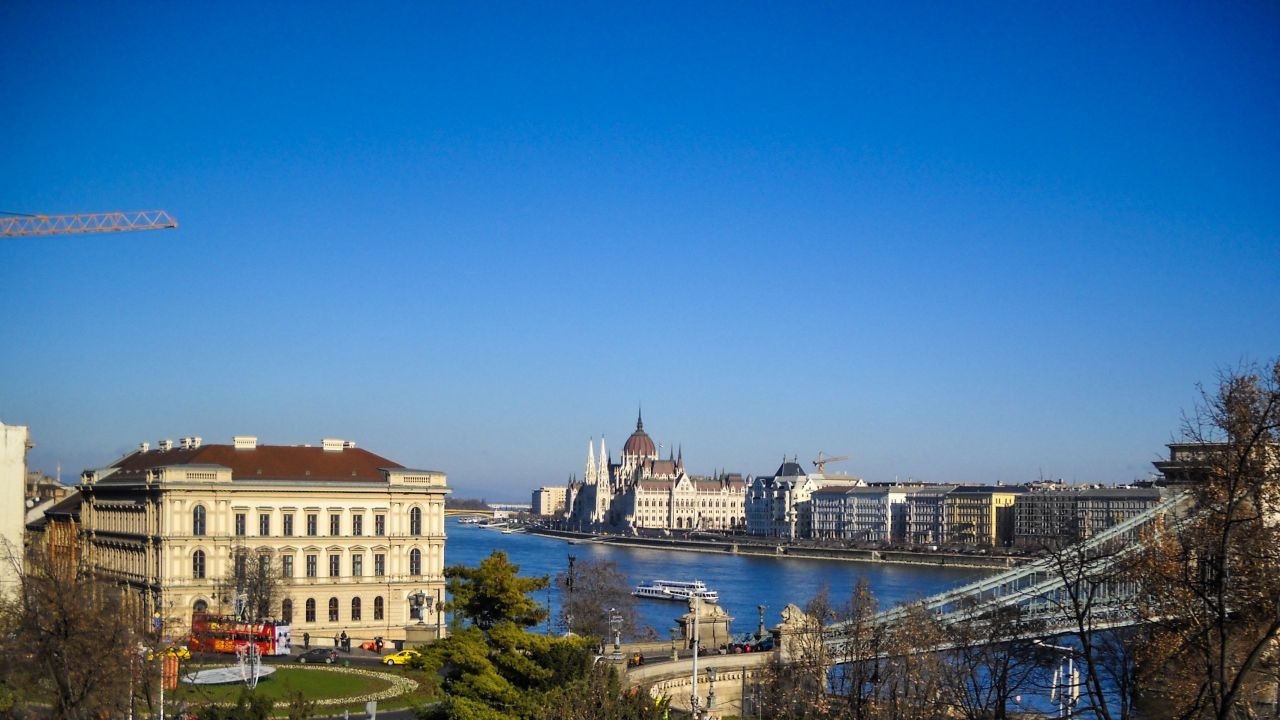

Comments